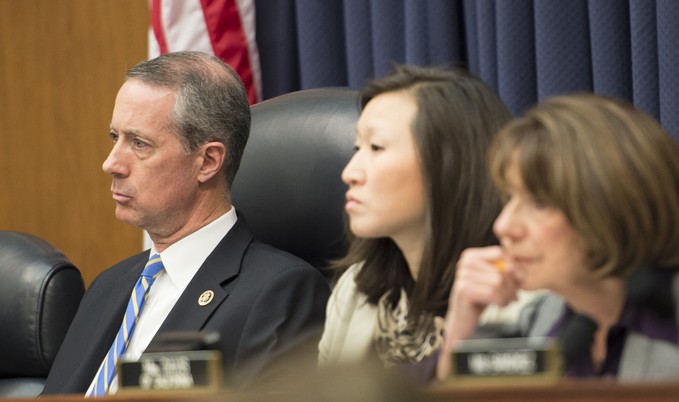National Defense Authorization Act: Five Things You Should Know
By
Lindsay Koshgarian
Posted:
|
Budget Process,
Military & Security

House Armed Services Committee Chair Mac Thornberry (at left). Photo by Chairman of the Joint Chiefs of Staff via Flickr
Today – all day and quite possibly into the night -- the House Armed Services Committee is marking up the National Defense Authorization Act (NDAA). But what is the NDAA, and why should we care?
Here are five things you should know:
- Congress is ignoring its own budget caps by pouring money into a Pentagon slush fund with little oversight or accountability. The current proposal for the NDAA follows the House and Senate budget proposals in allotting about $90 billion in off-the-books spending through the use of the Overseas Contingency Operations (OCO) Fund – the war fund for Iraq and Afghanistan that has since become a catch-all slush fund for any Pentagon expenses that don’t fit within the caps imposed by the 2011 Budget Control Act. The OCO slush fund isn’t subject to budget caps, but that doesn’t stop it from contributing to the nation’s deficit.
- The NDAA is an important, but early, step in the process toward deciding a defense budget. As an authorization, not an appropriation, the NDAA does not give the government the power to actually spend money. It does, however, set policy direction and lay the groundwork for later appropriations bills that will empower the government to actually spend. Spending authorized by NDAA will then need to be appropriated through multiple bills that set spending for the Department of Defense, Department of Energy’s nuclear activities, and others, in a process that will continue through the summer and into the fall.
- The NDAA markup is not as open and transparent as it should be. The first order of business for today’s markup is consideration of “Emerging Threats & Capabilities” – and much of this section of the NDAA is classified. But unlike the House Armed Services Committee which is marking up the NDAA today in open hearings, the Senate Armed Services Committee usually holds closed hearings on the NDAA, making a mockery of accountability and short circuiting democracy.
- The draft NDAA is chock-full of wasteful Pentagon spending. The current NDAA includes billions in spending on things the Pentagon did not ask for, and blocks the Pentagon from making intended cuts. For instance, it includes funding for an East Coast missile defense site that the Pentagon does not want and which could cost $3 billion or more; $2.2 billion in funding for additional F/A-18E/F Super Hornet and F-35 Joint Strike Fighter jets that the Pentagon did not ask for; and rejects the Pentagon’s request for a new round of Base Realignment and Closures (BRAC) in 2017 that could save money by closing or reorganizing Cold War era military bases to better fit today’s needs.
- The draft NDAA looks out for military contractors. The NDAA includes a giveaway to military contractors by setting recent procurement amounts as a benchmark for future procurement, ensuring a steady stream of profit – and potential waste – for military contractors.
While there’s a way to go before we have a national defense budget for fiscal year 2016, today’s markup and the impending House vote on the NDAA is an important opening volley in the defense debate, and an important opportunity to let your member of Congress know where you stand.